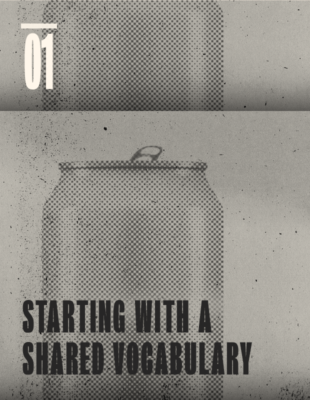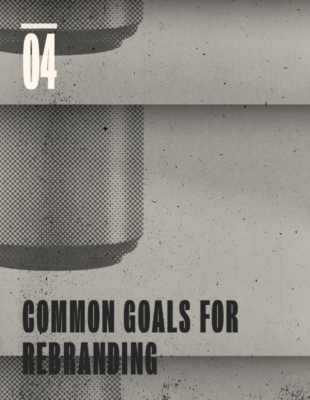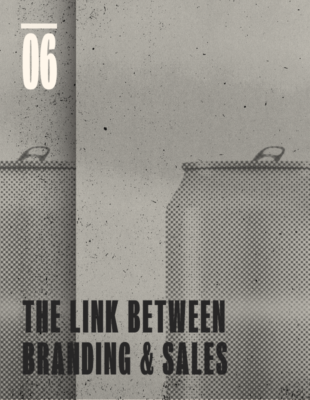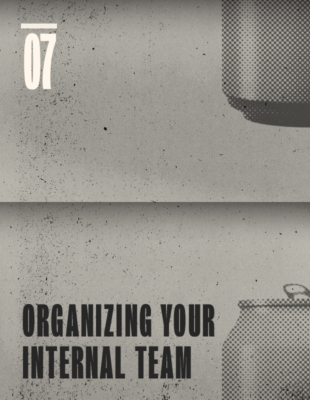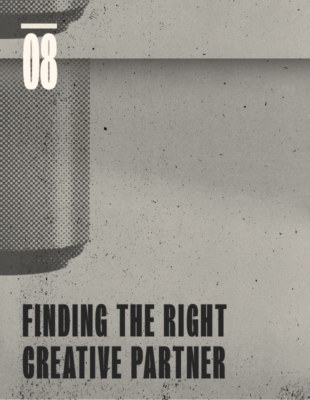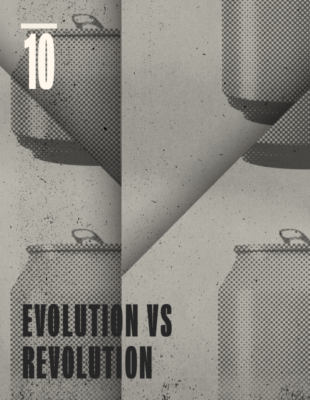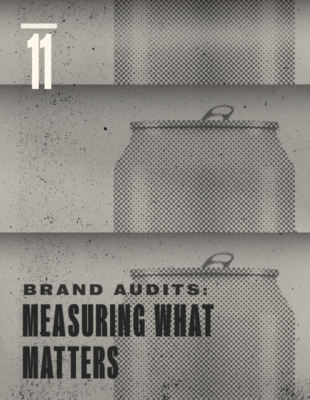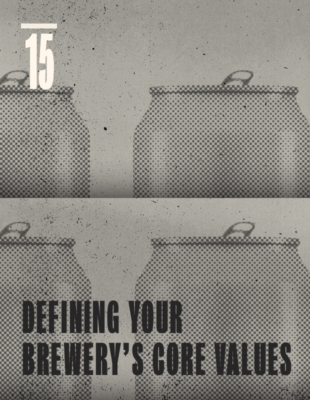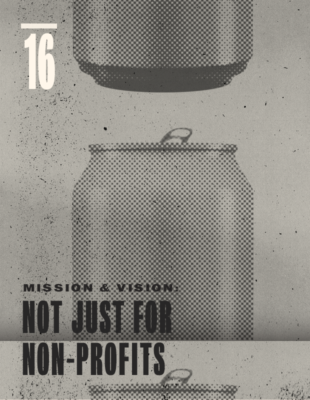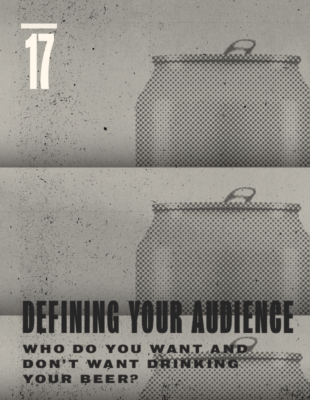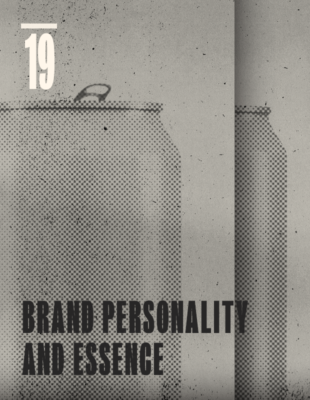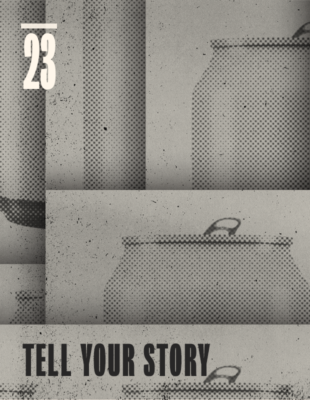
14
Defining Your Position in the Market
Positioning is the art and science of determining where you fit into the market relative to your competition. Are you focused on on-premise sales or are you a regionally distributed production brewery? Where are you located? Who drinks your beer? Do you brew a specific set of styles? Are you more expensive and premium, or are you geared toward partying? Are these mutually exclusive? Of course not.
Rebranding allows you to strengthen your positioning in the market or shift it entirely to allow for more intentional growth. You can get overly technical with this process by looking at market analyses and regional demographics. We distill a brewery’s positioning down to three points:
-
What do you do?
What type of brewery are you (regional/national production brewery, brewpub, farm brewery, etc.) and what type of beer do you brew? (mostly IPAs, Belgian-styles, Lagers, a little bit of everything, etc.)
-
Who do you brew for?
Who do you want (and don’t want) drinking your beer?
-
How are you different from your competition?
Not necessarily better, but what makes you unique? (Is there a story behind your brewery that sets you apart?)
One of our favorite tools to kick the positioning process off is a matrix. This is a simple graph composed of an X and Y axis that each represent a different attribute of a brewery. These attributes might be price (low to high), visual styling (minimal to heavily-illustrated) and so on. This is an iterative “back-of-the-napkin” method for thinking about your brewery’s culture, your fans, your competition, and how they all come together to reveal opportunities for ownable differentiation.
Here are a few questions we use to size up your market:
- Are these other places brewpubs or production breweries? What’s their
overall concept? - What beer styles are they known for?
- Are they in cans, bottles or both (or predominately draft)? What specific sizes?
- How do their prices compare to everyone else? (on and off-premise?)
- Are they new or well established?
- Are they involved in the local community? (Do they support specific charities or other causes?)
- Are they well branded? Do you know what they stand for?
Choose a few of these metrics and place them on opposite ends of an axis. Then, plot out where your competition falls (and don’t forget to chart your own brewery).
You’ll be making a few of these in the workbook. For now, here’s an example:
Using this group of breweries as an example, we see a lot of inclusive brewpubs featuring well-made, drinkable, non-offensive beers—nothing crazy, just the standard lineup. And while there are a few breweries in the region packaging more specialty beers (barrel-aged stouts, imperial IPAs, and sours, for example), there aren’t that many brewpubs to visit to regularly try these beers.
Admittedly, this is an oversimplified look at the market, but if we use this matrix correctly, there could be an opportunity to create a brewpub (or rebrand and reposition your brewery) to this model. Of course this assumes your market can sustain the opportunity you’ve identified. There may well be reason why no one is doing that particular concept yet.
These positioning exercises are the only time in the rebranding process where you will spend significant time focusing on your competition. You’ll revisit your competitive set as you design your brand identity and packaging (mostly to get a sense of how you can stand out visually). Our goal here is to identify opportunities for differentiation so that your brewery can set itself apart as opposed to crushing your competition and seeing them driven before you. And I imagine that’s how you operate as well.
Setting your brewery apart with categorical differentiation
One of the most powerful ways of achieving differentiation is by creating a new product category. We first encountered this concept in the fantastic book The 22 Immutable Laws of Marketing in which authors, Al Ries and Jack Trout, explain that it’s far easier and more effective to create categorical differentiation than differentiating by brand alone.
A non-beer example from the book is to see if you can recall the first person to fly solo across the Atlantic Ocean? If you know (or guessed) Charles Lindbergh, bingo! The second person? Amelia Earhart.
Most people remember the second pilot’s name more than the first (I had never heard of Lindbergh’s name before reading this book). Why is that? Was Earhart the second person to fly across the Atlantic? No. She was the first woman to do so. You don’t remember her as the second person (because we rarely remember the second person/company). You remember her as the first in her category (female aviator). The fact that her plane mysteriously disappeared in 1939 makes her story all the more memorable. But that doesn’t help our cause here. You don’t want to be remembered for being so adventurous that your brewery mysteriously disappeared.
You can be yet another brewery in your town, or you can be the first brewery to do something unique and ownable.

Big Lug Brewing’s packaging
Now for a current day example: We’re witnessing something akin to an arms race (in terms of its intensity, anyway) to own the burgeoning “better for you” beer category. Stemming from the meteoric national sales success of Michelob Ultra, craft brewers are now cranking out low carb, low calorie, “light” craft lagers as fast as they can. Beer is now healthy. What a time to be alive!
As of 2019, this category includes major entrants from Bells, Lagunitas and Dogfish Head. Boston Beer even targets its 26.2 Brew directly toward people who (for whatever reason) willingly run marathons.
It’s also fun to watch the language shift as these breweries strive to achieve categorical differentiation. We’ve seen terms like “Recovery Beer” and “Functional Beer” and even the ambitious moniker “Wellness Beer” used in the market. How that last one makes it past the TTB label approval process, I have no idea. But it’s very smart from a brand strategy standpoint.
Writing your brand positioning statement
Your brand positioning statement puts a concise cap on this entire process. It’s a short sentence that clearly states what you offer and why you’re special, who you serve and the role you play in their lives.
Here’s a template for finalizing your brewery’s brand positioning statement:
Example: Big Lug Canteen serves Nora residents approachable English-style beers and hearty brewpub fare in a fun, airy, and creative spot.
